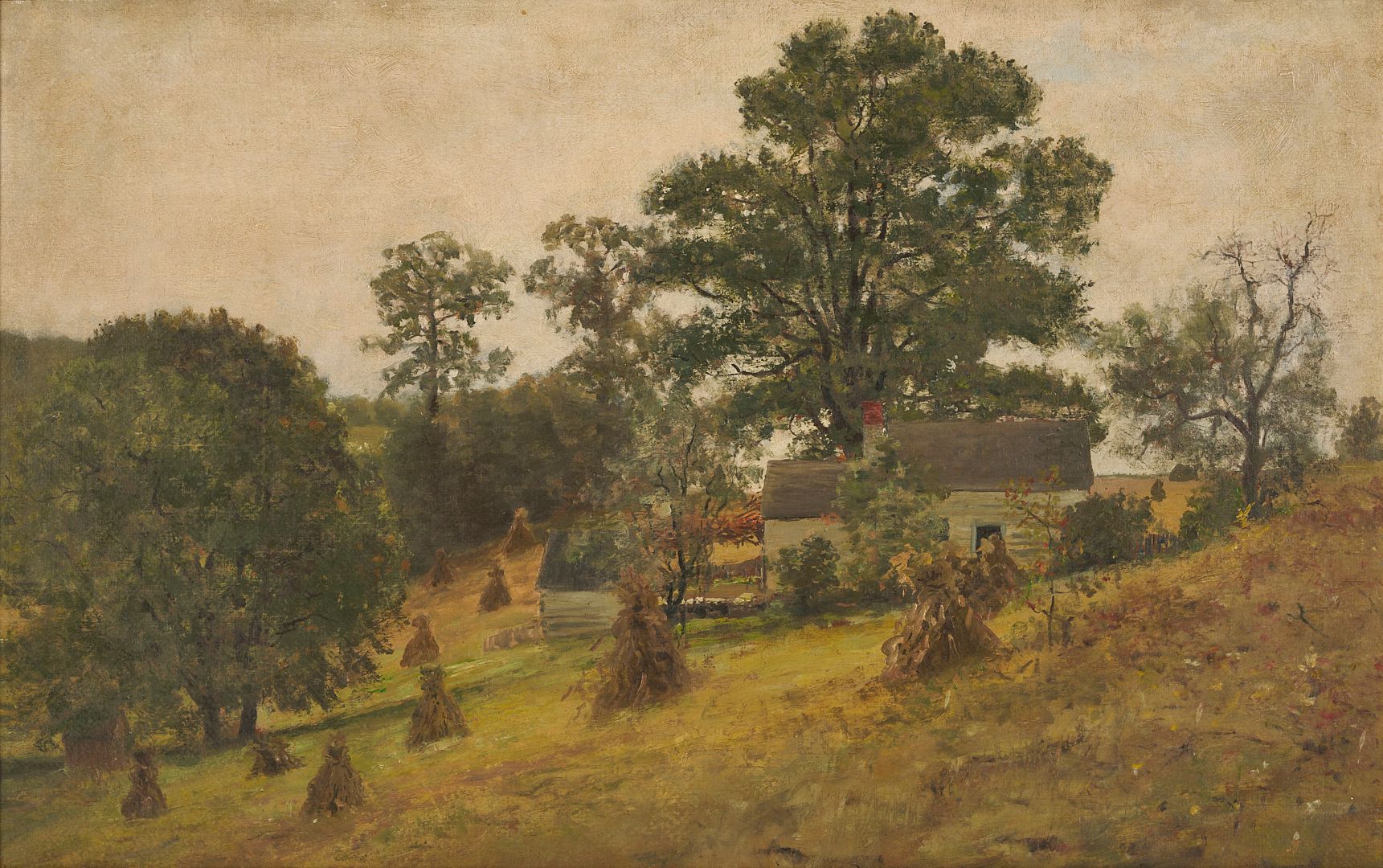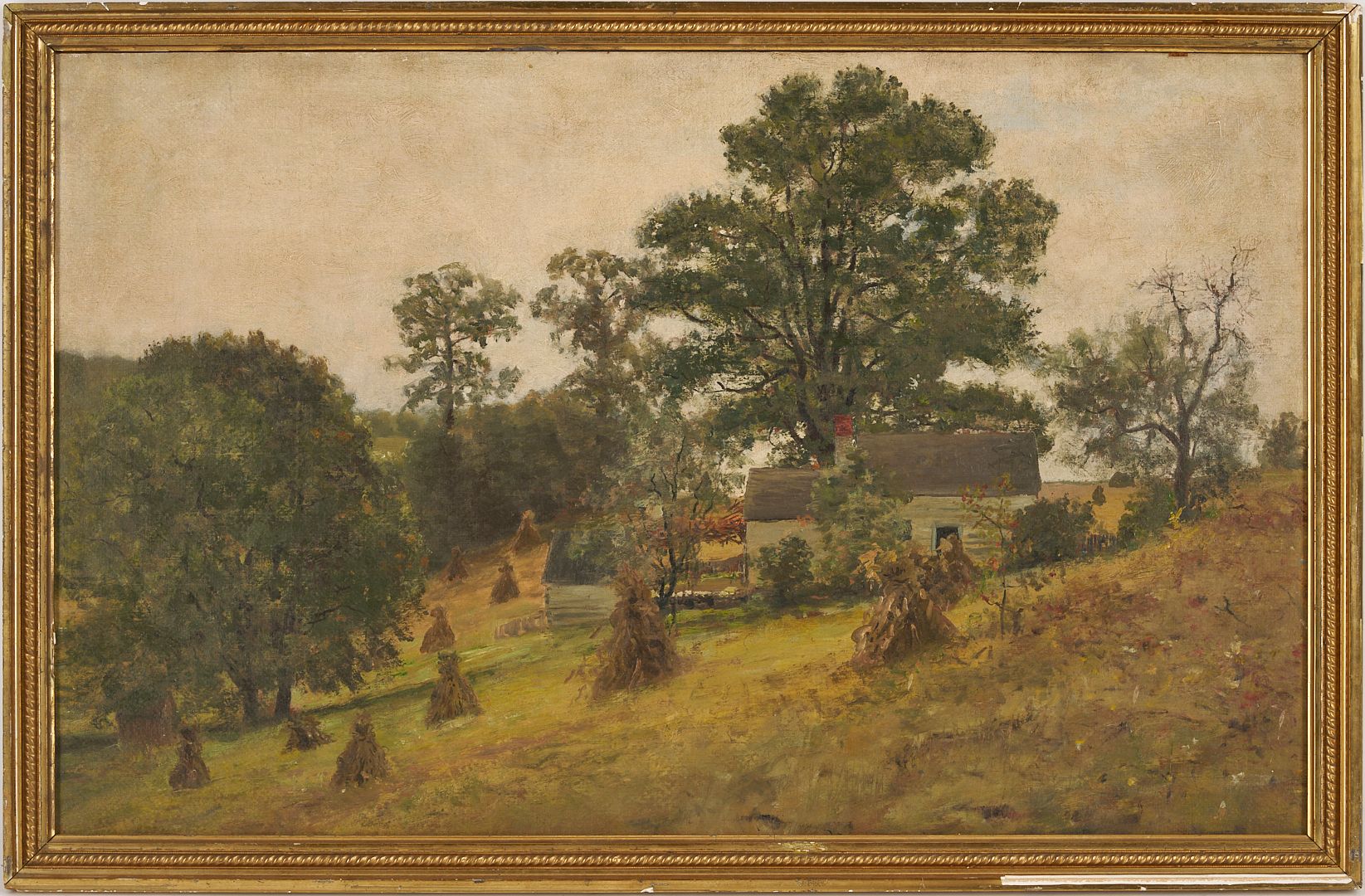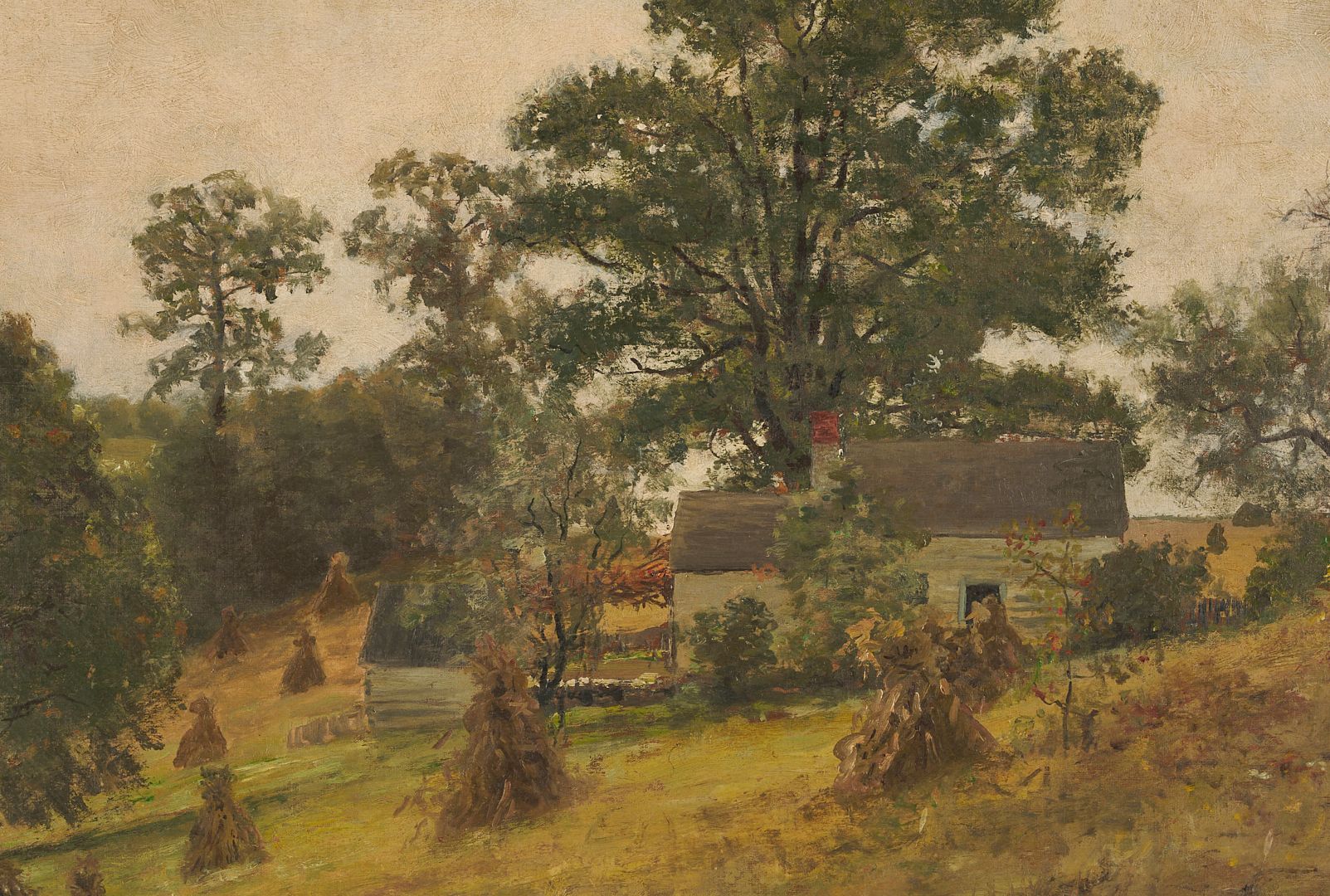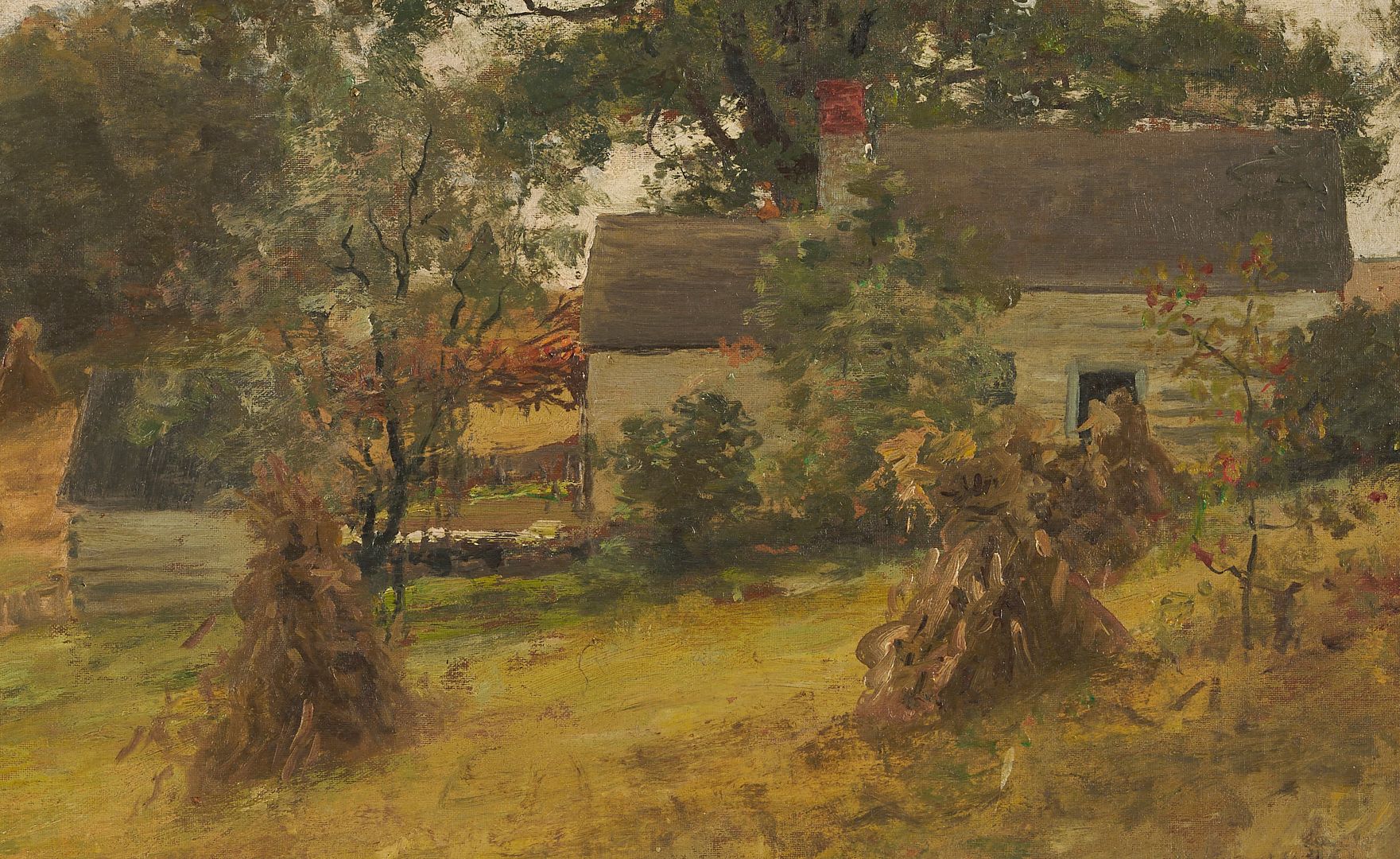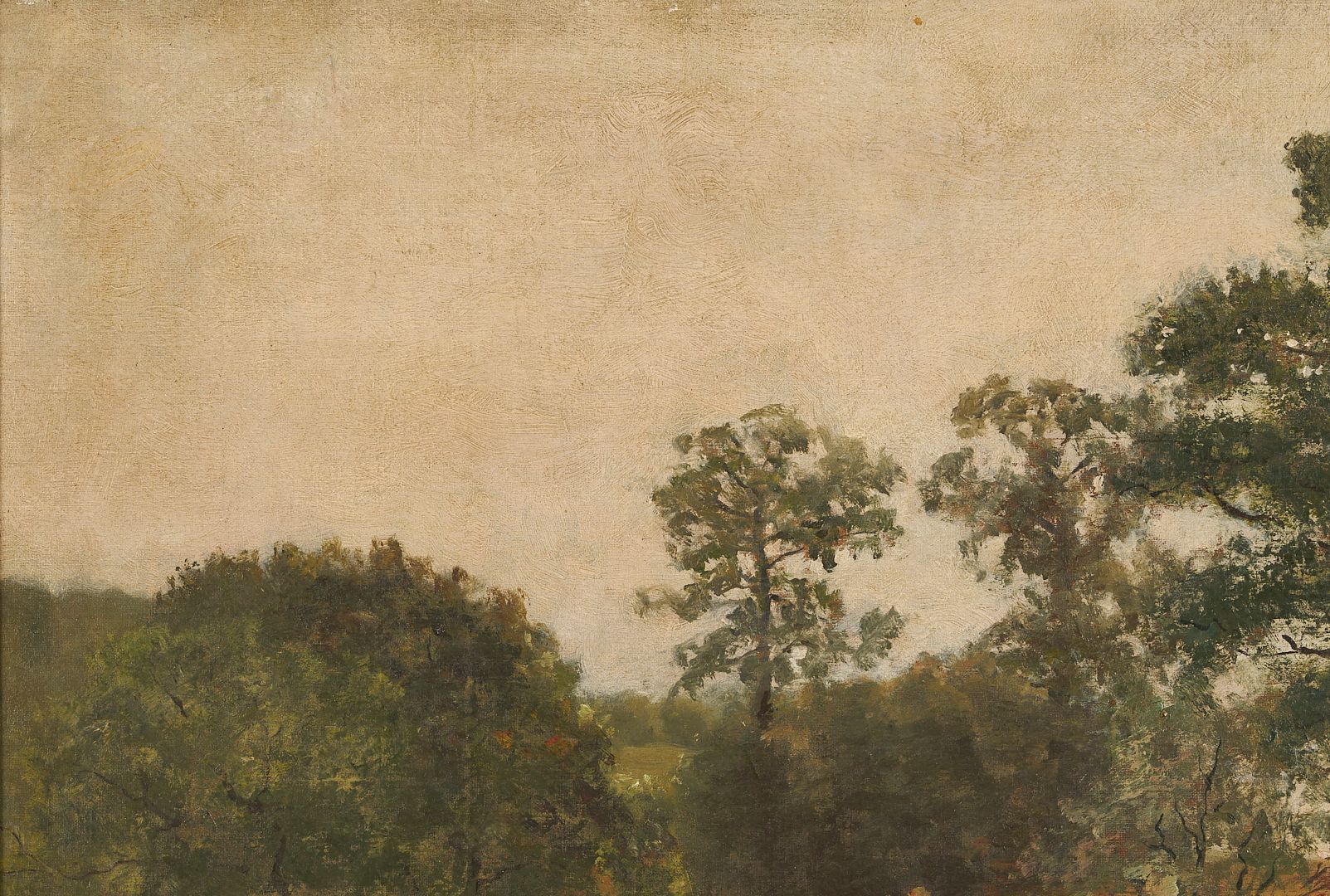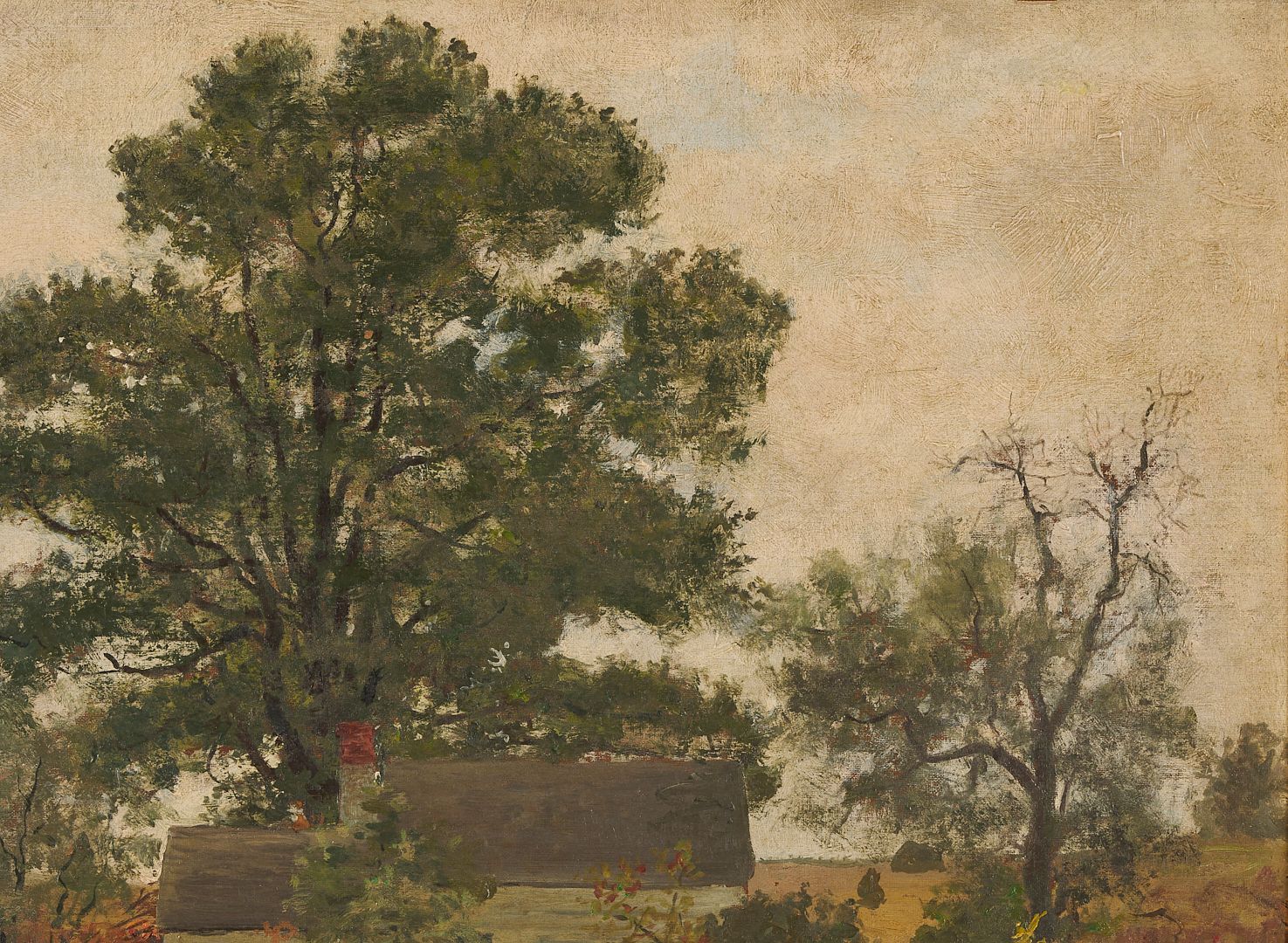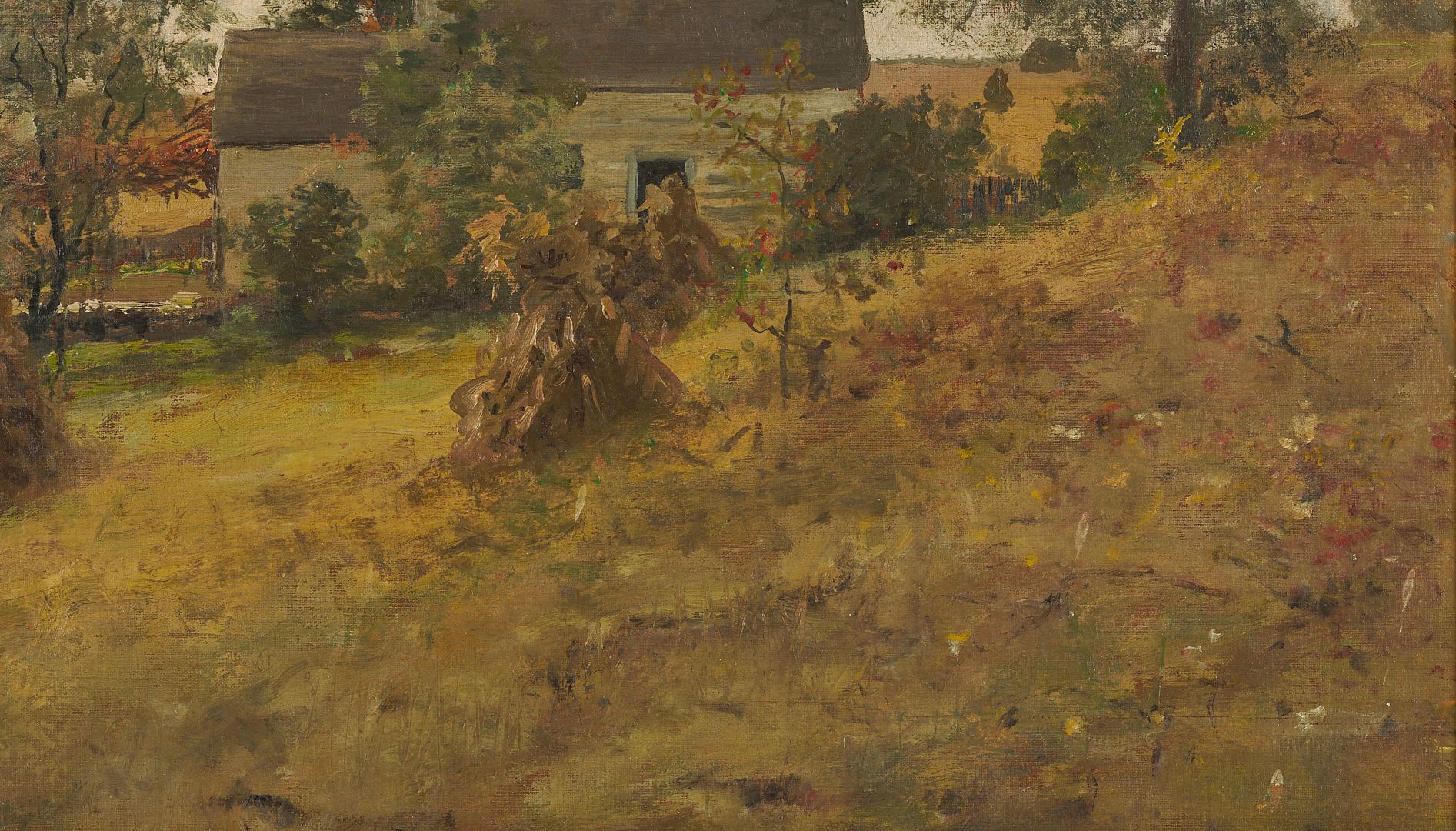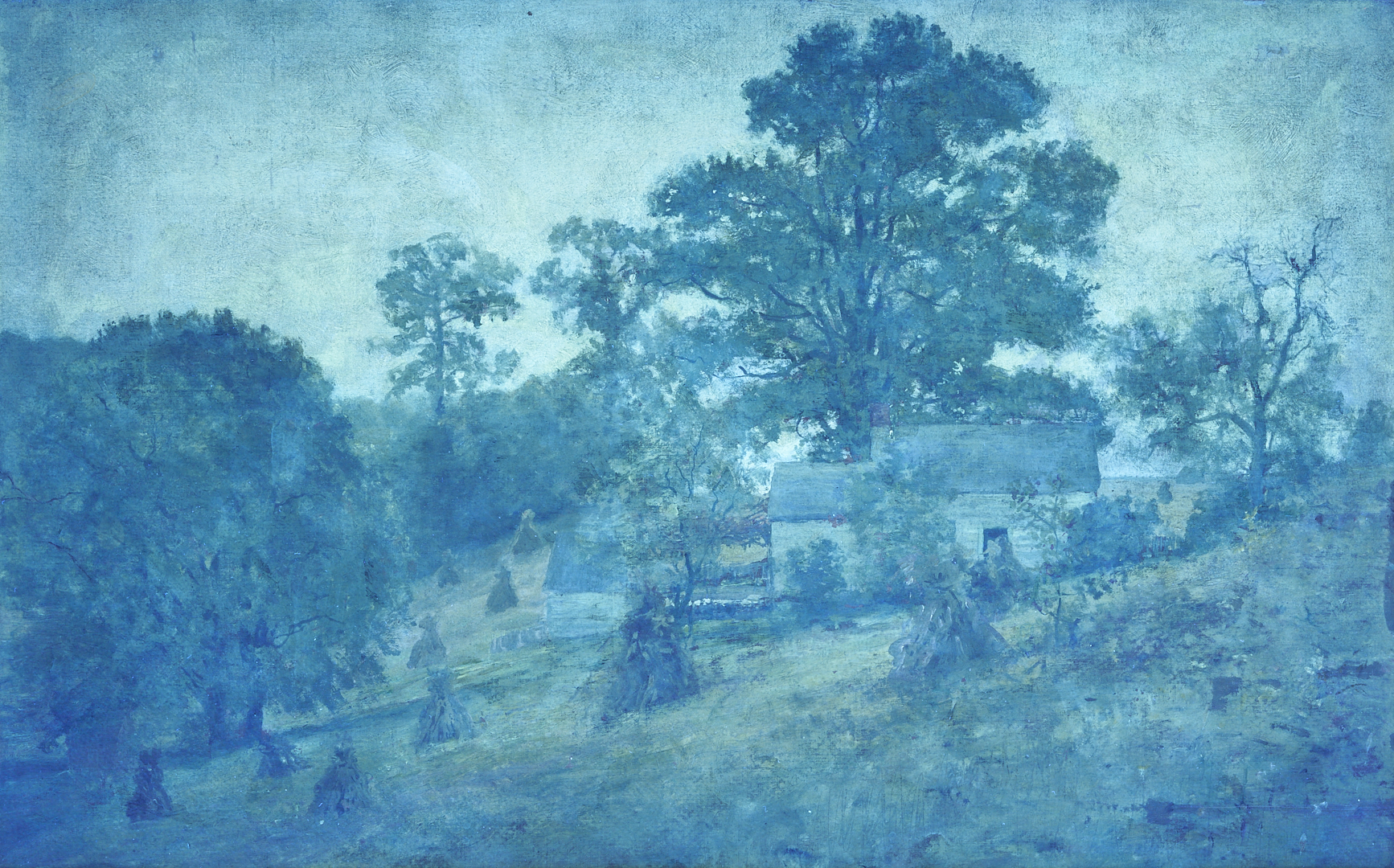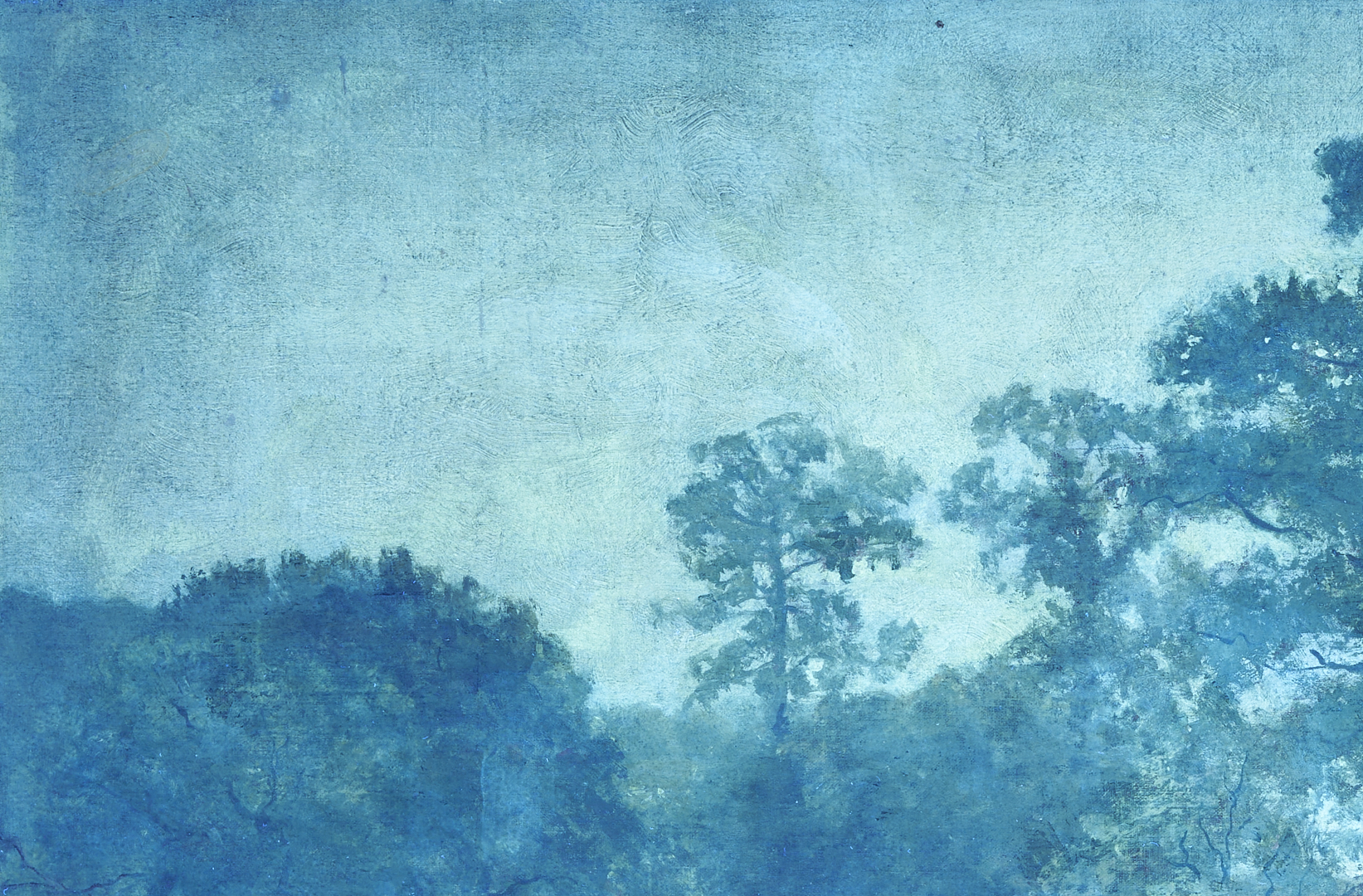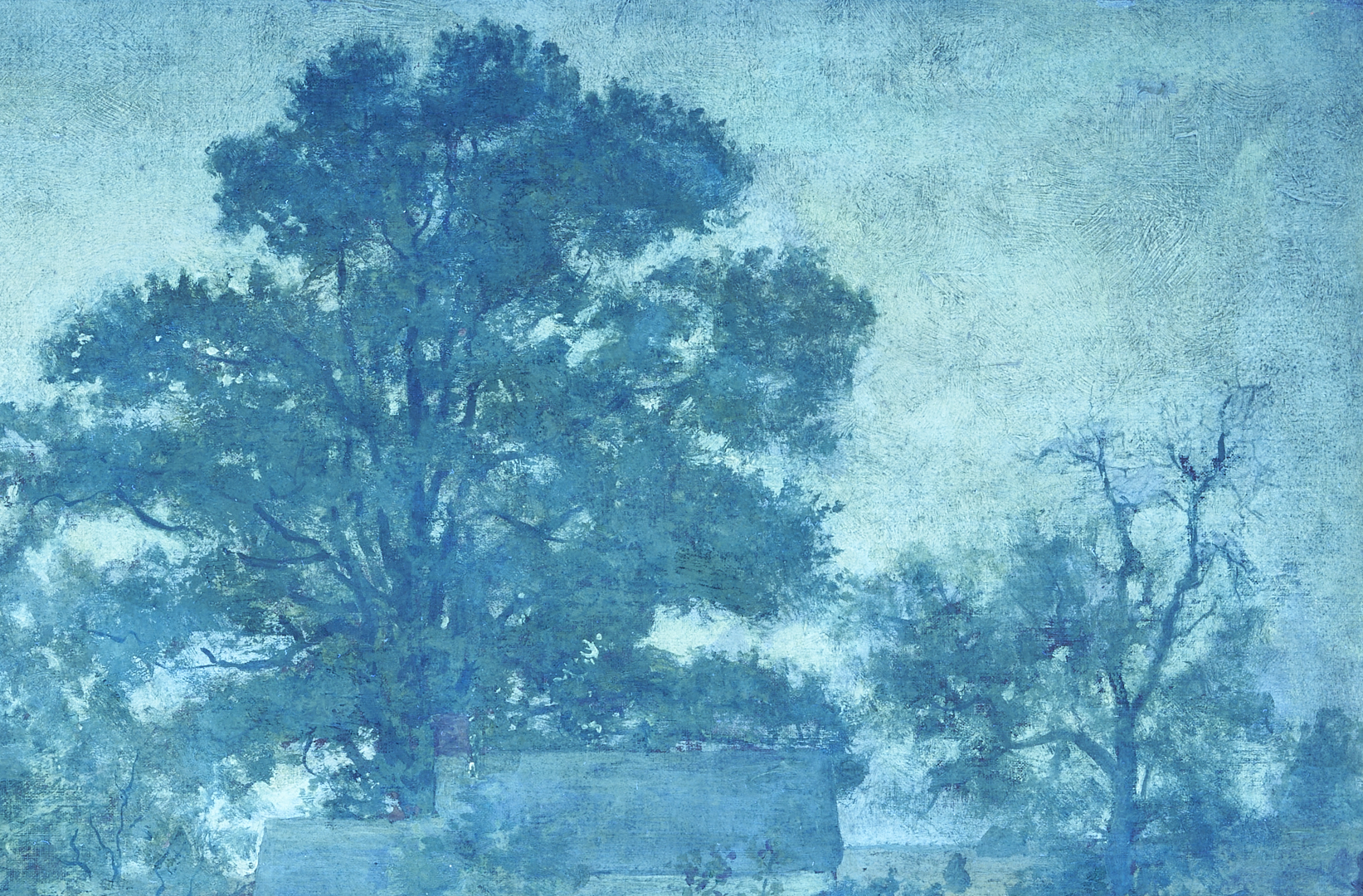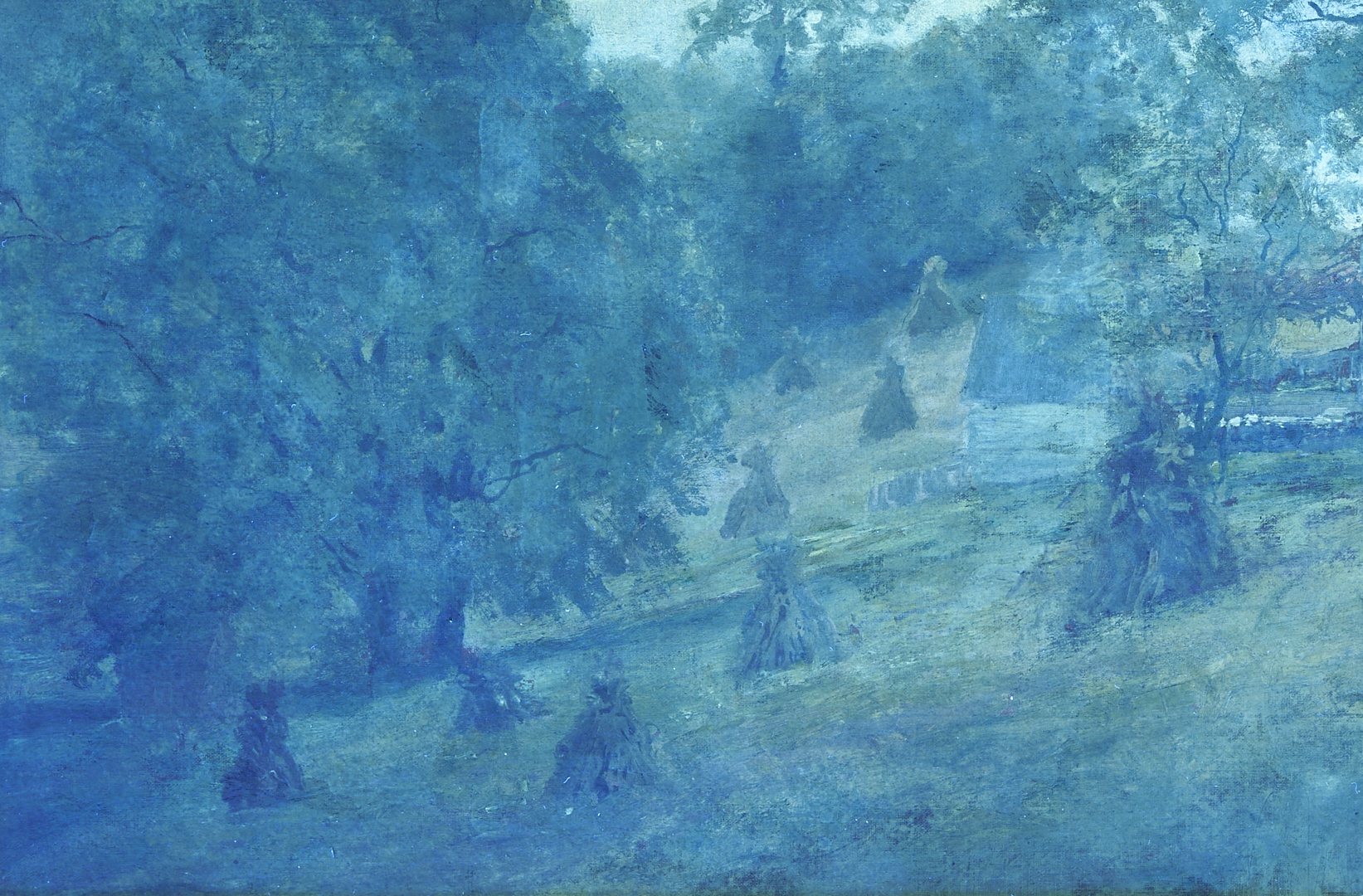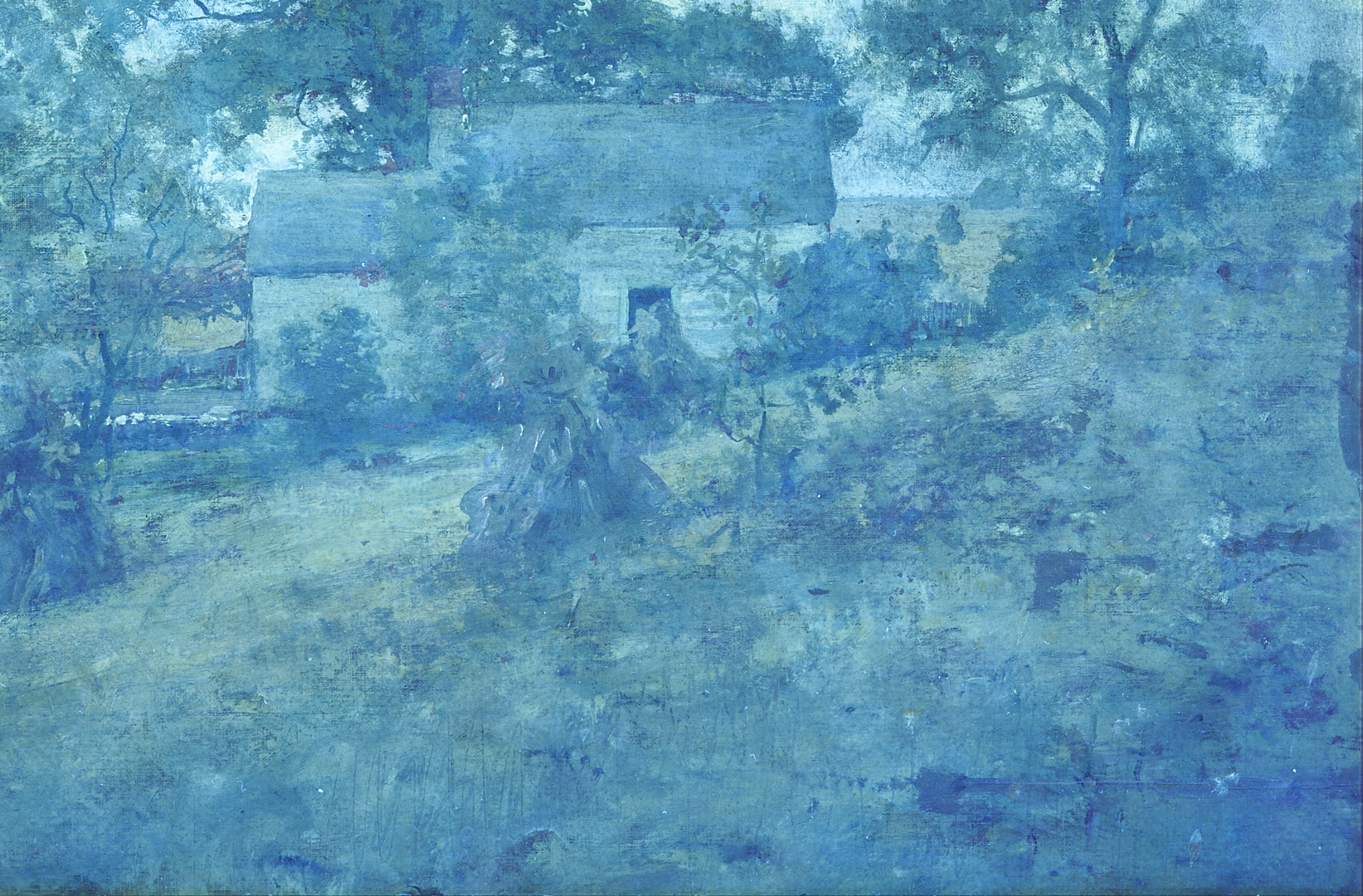SOLD! for $1,037.00.
(Note: Prices realized include a buyer's premium.)
If you have items like this you wish to consign, click here for more information:
Selling with Case- Low Estimate: $500.00
- High Estimate: $600.00
- Hammer Price: $850.00
- Share this:
Carl Gutherz or Guthers (Tennessee/Missouri, 1844-1907), “Log Cabin and Corn Shocks at ‘Oak Rued,’ Rockville, Maryland,” oil on canvasboard landscape painting with the artist’s home, Oak Rued, surrounded by shocks of corn and trees, 1904. Unsigned. Housed in a giltwood frame. Sight: 16″ H x 25 3/8″ W. Framed: 18″ H x 27 1/2″ W. Literature: Illustrated and discussed in CARL GUTHERZ: POETIC VISION AND ACADEMIC IDEALS, eds. Marilyn Masler and Marina Pacini (Memphis, TN: Memphis Brooks Museum of Art, 2009), fig. 1.16, and p. 25. Note: “[Gutherz] was among the many artists residing in Washington, D.C. who sought relief from the urban congestion in nearby Rock Creek Park, a popular retreat. He even purchased a summer home in nearby Rockville, Maryland, in 1904. Located near the upper end of the park, it was a destination easily reached by train from the capital. In addition to summer months, he spent many spring and autumn days with his family at this home (christened Oak Rued), painting the surrounding scenery.” Source: Masler, Marilyn, “Biography” in CARL GUTHERZ: POETIC VISION AND ACADEMIC IDEALS, p. 25. Artist Biography: “Gutherz, who was born in Switzerland, emigrated as a child to the U.S. in 1851. He lived with his family in Memphis, Tennessee, through the Civil War and then studied at the Ecole des Beaux Arts in Paris and the Academie Julian, as well as in Munich, Brussels, and Rome. In 1875 he moved to St. Louis, Missouri, where he taught at Washington University and helped establish the St. Louis School and Museum of Fine Arts. Guthers continued to take portrait commissions from Memphis, however, and even designed costumes and floats for the annual Memphis Mardi Gras. In 1884 he returned to Paris, where he studied with Gustave Boulanger and Joseph LeFevre. Here, he became associated with the Symbolist movement and produced his most successful paintings including large allegorical works, often featuring Christian imagery. Back in the U.S. he was hired to create murals for institutions including the Library of Congress, the People’s Church of St. Paul Minnesota, and the Allen County (Indiana) Courthouse. A year before his death, he produced a design for an arts and sciences pavilion which was the basis for the development of the Brooks Memorial Art Gallery, later the Memphis Brooks Museum of Art.” (Source: The Tennessee Encyclopedia)
PROVENANCE: Deaccessioned by the Memphis Brooks Museum of Art to benefit the acquisitions fund.
CONDITION: Overall very good condition, with stable, minor separation to canvas fibers at lower right, 6 1/2″ L, and minor retouching to surrounding hillside, largest area 3″ x 1/4″ along right edge. Localized losses to building, largest area 7/16″ L x 1/4″ W, and accretion to top of roof at left of chimney, 1/4″ x 1/4″. With negligible surface grime throughout. Frame with abrasions and gilt loss, especially to lower right.
